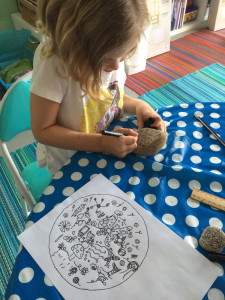With the Easter school holidays coming to an end for a large number of students around the country, I am sure that anxiety levels are starting to increase for many of them.
Not wanting to go back to school is not unusual for children, but when this becomes extreme and causes not only the child, but also the rest of the family distress, it is time to take it seriously.
Anxiety is a normal part of life. It is our body’s way of warning us of danger and keeping us safe. Sometimes, this protective mechanism goes into overdrive and instead of just making us aware of possible hazards, it cripples us from acting at all.
Anxiety can affect us both physically and mentally. We may experience dizziness, nausea, sleeplessness, increased breathing rate, trembling, constant feelings of fear or dread, wanting to avoid certain situations/people/places… the list goes on.
For young children, experiencing these thoughts and feelings can be extremely overwhelming, and they express this in the only way they know how- crying, acting out, not wanting to go to school etc.
Anxiety disorders affect 6.9% of children (4 – 11 years) (KidsMatter, 2015) and nearly 17% of young Australians aged between 16 and 24 have experienced an anxiety disorder in the last 12 months. These are scary statistics and they are on the rise.
You might be thinking that this is all well and good, but what can I do to help my child?
Here are three simple art therapy techniques that you can do at home to assist your child with managing their anxiety.
- Mandala drawing/colouring.
Mandalas are a wonderful way of helping to calm, centre and ground both adults and children. Mandalas are circular drawings that bring our attention back to our centre. They have been used for hundreds of years across many cultures and their benefits are just as relevant for us today.
There are hundreds of mandala colouring pages available on the Internet that you can print for your child to colour. If they enjoy drawing, they might like to create their own mandala. All you need is a square piece of paper with a circle drawn in the middle (I trace around a dinner plate to give myself a big circle to draw in). Your child can then draw patterns or even pictures inside the circle and colour it in. This can also make a fun family activity where each member of the family takes turns adding to the mandala design.
- Recognise the fear and draw it as a character.
For this activity you will need to talk to your child about what their anxiety looks like. Get them to imagine it as a creature/monster and then draw a picture of it. Guide them to think about what colour their fear is, how big it is, where it lives in their body, what it looks like, any special features that it has. Often when children are drawing their fear, it loses its power and is not so scary any more.
You can take this activity one step further by getting your child to draw funny glasses/hat/shoes etc on their creature so that it looks silly. This image can help them when they start to feel anxious as it turns their fear into something to laugh at instead of allowing it to take over.
- Create a picture or collage of your favourite place or happy memory.
By creating a visual representation of a place or memory that brings them joy and feelings of happiness, your child can focus on this when they start to feel anxious or worried. As adults we often visualize how we would like things to be, but children need to learn how to do this.
They might like to draw a picture or collect photos/pictures that they can put together to create a collage. When they are feeling worried, guide them to look at their picture and think about how they felt in that place or when that event was happening. Make sure you focus on all of the positive feelings so that these can take the place of the worry and fear.
It is important that children realize that anxiety is a normal part of our lives, and that there is nothing wrong with them for feeling this way. As parents it is vital that you validate your child’s fears and listen to their concerns. What may seem small and insignificant to us may be an overwhelming issue for your child.
If you would like more information or strategies to help your child, or would like to book your child in for some anxiety busting art therapy workshops, please get in touch.
If you try any of these strategies with your children, I would love to hear from you.


Comments: no replies